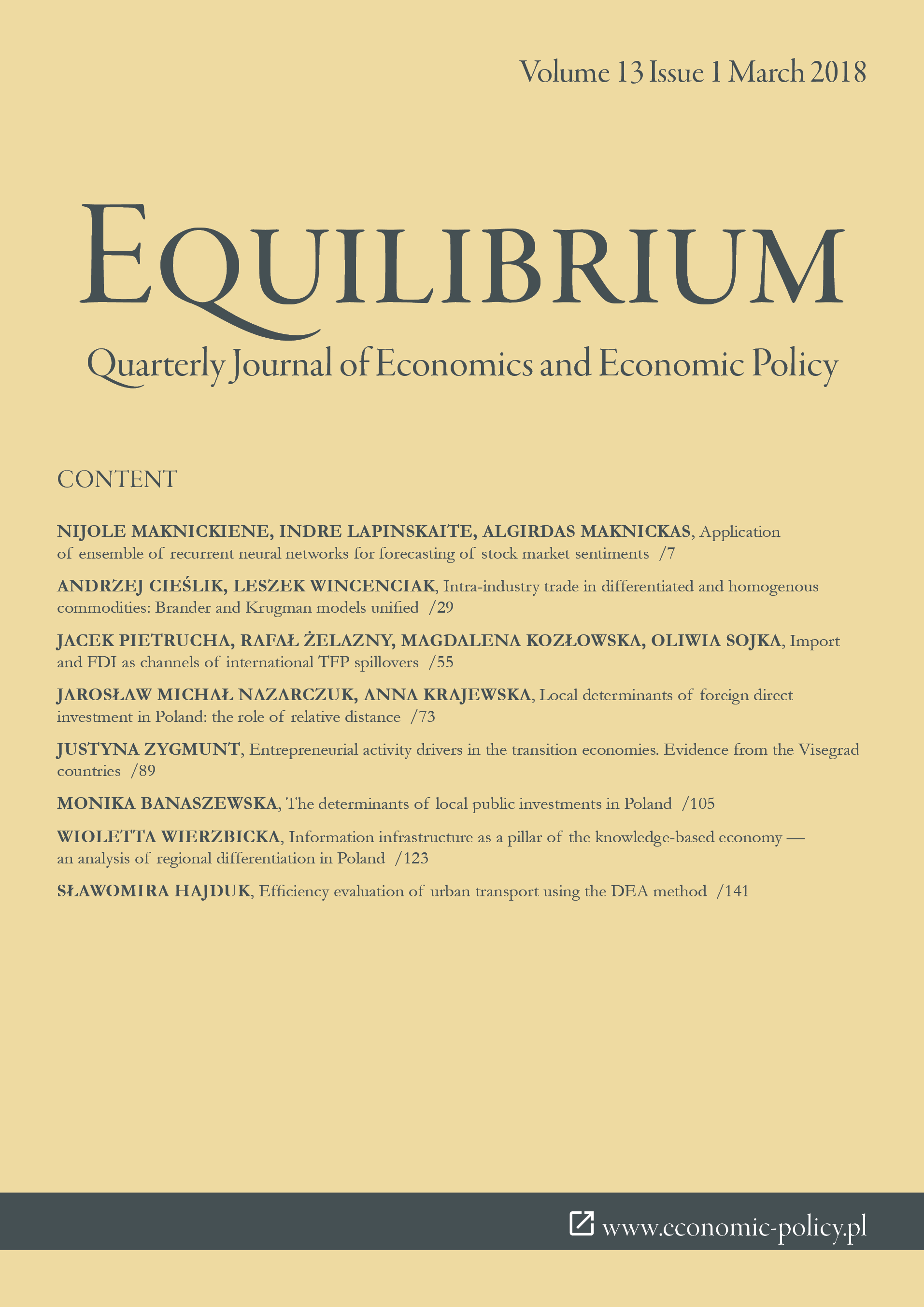Application of ensemble of recurrent neural networks for forecasting of stock market sentiments
Application of ensemble of recurrent neural networks for forecasting of stock market sentiments
Author(s): Nijole Maknickiene, Indrė Lapinskaitė, Algirdas MaknickasSubject(s): Economy, Financial Markets, ICT Information and Communications Technologies
Published by: Instytut Badań Gospodarczych
Keywords: artificial intelligence; ensembles; sentiments; stock market; investors’ behavior;
Summary/Abstract: Research and measurement of sentiments, and the integration of methods for sentiment analysis in forecasting models or trading strategies for financial markets are gaining increasing attention at present. The theories that claim it is difficult to predict the individual investor’s decision also claim that individual investors cause market instability due to their irrationality. The existing instability increases the need for scientific research. Purpose of the article: This paper is dedicated to establishing a link between the individual investors’ behavior, which is expressed as sentiments, and the market dynamic, and is evaluated in the stock market. This article hypothesizes that the dynamics in the market is unequivocally related to the individual investor’s sentiments, and that this relationship occurs when the sentiments are expressed strongly and are unlimited. Methods: The research was carried out invoking the method of Evolino RNN-based prediction model. The data for the research from AAII (American Association of Individual Investors), an investor sentiment survey, were used. Stock indices and sentiments are forecasted separately before being combined as a single composition of distributions. Findings & Value added: The novelty of this paper is the prediction of sentiments of individual investors using an Evolino RNN-based prediction model. The results of this paper should be seen not only as the prediction of the connection and composition of investors’ sentiments and stock indices, but also as the research of the dynamic of individual investors’ sentiments and indices.
Journal: Equilibrium. Quarterly Journal of Economics and Economic Policy
- Issue Year: 13/2018
- Issue No: 1
- Page Range: 7-27
- Page Count: 21
- Language: English

